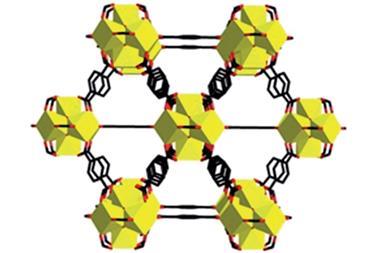Small oxidising molecules ignite potential of coordination polymers as a primary explosive
With the help of a few guest molecules, a group of researchers in the US have transformed a regular metal–organic framework (MOF) into a powerful primary explosive.
Coordination polymers such as MOFs possess great potential as energetic materials due to their high energy density. But these materials are often oxygen deficient, which means that in an explosive reaction there is insufficient oxygen available to react with the carbon and hydrogen atoms of the fuel.
Adam Matzger’s team from the University of Michigan have cracked this problem with an elegant solution. Taking advantage of the natural porosity in MOF-5’s structure, tetranitromethane and hexanitroethane were adsorbed into the framework to form two materials with a good mix of fuel and oxidant species. Upon testing their properties, the team were able to classify these materials as primary explosives – which can be initiated with just a small external force.
This discovery may spark interest in these materials as replacements for environmentally harmful lead-based initiators.
References
This article is available for free until 21 October 2016
K A McDonald et al., Chem Commun., 2016, 52, 10862 (DOI: 10.1039/C6CC06079J)












No comments yet